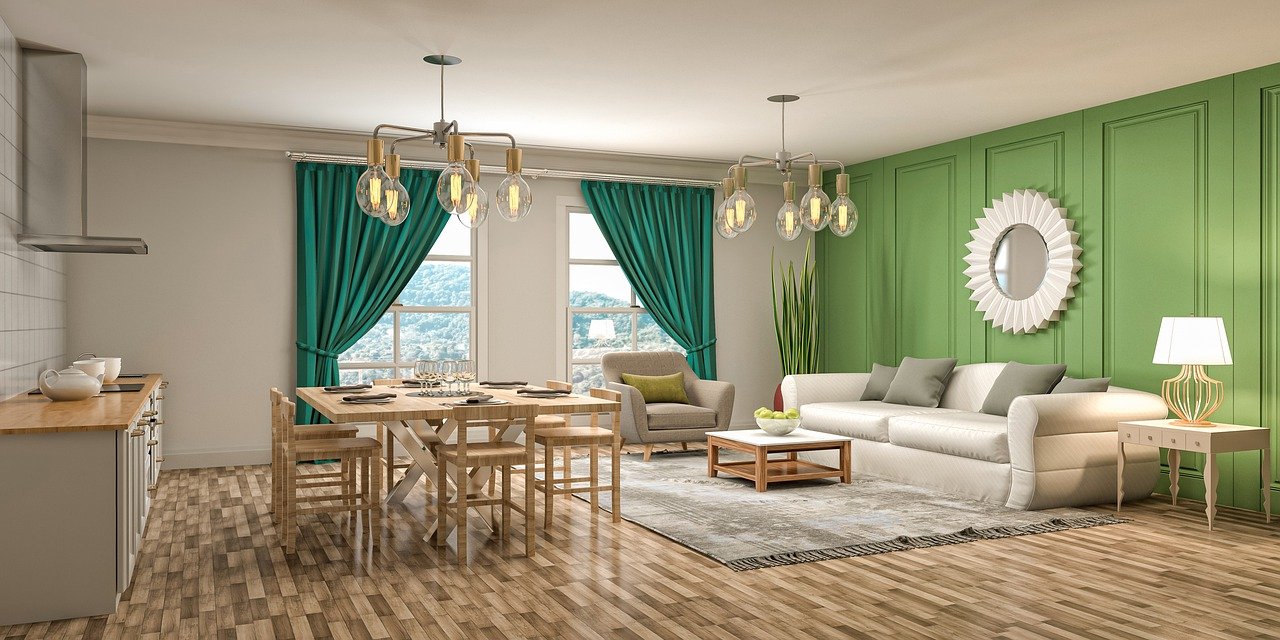
Fears over climate change and the state of our environment are growing. In response to this, more and more consumers are seeking to reduce carbon emissions by supporting eco-friendly brands and products. In fact, a recent report found that an impressive 73% of millennials are prepared to pay more for sustainability. Businesses across all industries are picking up on this trend and investing heavily in making their operations and products greener. The interior design sector is no different; there have been huge developments in recent years to make buildings more eco-friendly. Here are some of the top sustainable trends in interior design to look out for.
Recycling and reusing materials
One of the top ways to reduce your environmental impact is by creating less waste. In today’s age of consumerism, most items are considered disposable and our desire to be on-trend is coming at a huge cost to the environment. Instead of throwing away your old furniture, try to give items a new breath of life by painting or personalising them. Upcycling is a huge trend at the moment and can be an excellent way to reduce waste and save money. You can search on sites like Pinterest for inspiration on how to upcycle furniture and other household items. Some people are going one step further and creating their entire home from recycled materials like old shipping containers. Shipping container homes are big right now and many people are transforming old containers into affordable, eco-friendly and unique living spaces. Once converted, you can kit your container home out with sustainable decor like second-hand accessories and upcycled furniture.
Focusing on longevity and durability
Sustainable interior design focuses on longevity and durability. Instead of choosing materials that will go out of fashion quickly, eco-conscious designers should focus on creating timeless interiors that will remain in fashion long-term. Keep in mind that choosing in-trend designs is far less sustainable because your interiors are likely to become outdated within a few years. You should also try to choose durable materials and items that will stand the test of time. Some long-lasting materials include metals, hardwood and stone. Adopting a timeless approach to interior design will help to minimise waste and will also save you time and money, as you won’t be tempted to redesign your interiors as often.
Incorporating natural design elements
Plants and flowers are not just aesthetically pleasing, they also have various health benefits and help to create a sustainable interior design. Keeping plants in your home will improve your indoor air quality and allow you to breathe clean, fresh air. Being surrounded by natural elements can also improve your mental health and well-being. Many plants have calm-inducing qualities that can boost your mood and reduce feelings of stress and anxiety. According to House Beautiful, some of the best house plants to reduce stress include lavender, aloe vera and gerbera. Incorporating natural elements like wood and stone into your interior design can also be a fantastic way to repurpose waste materials and reduce pollution associated with the manufacturing of new items.
Energy-efficient interiors
One of the top ways to make your interiors sustainable is by considering energy-efficiency. For instance, the lighting you use can have a big impact on the overall sustainability of your interior design projects. LED lighting uses up to 75% less energy than traditional incandescent light bulbs. With that in mind, you should always try to use energy-efficiency lights like LEDs in your interior design projects. You should also place a special focus on making your windows and doors as energy-efficient as possible. Replacing old windows and doors with modern designs or upgrading to triple-glazing can instantly make your living space warmer and more eco-friendly. Even soft furnishings like cushions or doorstops can be used to provide extra insulation and reduce cold drafts. Taking steps to make your interiors more energy-efficient is not only good for the environment, but it should also save you money by cutting your energy costs.
Conclusion
Global warming is having a progressively damaging effect on our environment and it’s time that we all take action to protect the planet for future generations. Eco-friendly building and design trends are becoming hugely popular - and for good reason! Incorporating sustainability into your home will help you create a healthier living space, reduce your carbon footprint and could save you heaps of time and money. We should all spare a thought for the environment when it comes to our homes and interior design.
Resources:
73 Percent of Millennials Are Willing to Spend More Money on This 1 Type of Product
7 Plants That Help to Reduce Stress
You may also like
Innovative Materials for a Net-Zero Energy Home
8 Ways to Make Your Bathroom Eco-Friendly
The Ultimate Guide to Sustainable Home Decor
Green Home Renovations: 5 Eco-Friendly Kitchen Upgrades
4 Sustainable Ways to Renovate Your Home
